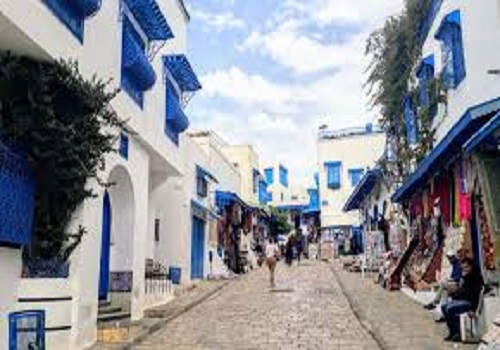The ksar is generally provided with a single entrance, protected by a door, except in the case of plain ksour. A corridor, called skifa, provides access to the courtyard. These places are used for social life: you can meet there, welcome visitors and carry out commercial transactions. On the courtyard, of variable shape, open the ghorfas, four at most, arranged on the ground floor or in floors. Some ksour have a second courtyard if they have experienced an extension, as is the case of Ksar Ouled Soltane who thus has 440 ghorfas while the average is between 150 and 200.
The ghorfas are superimposed cells, closed on the outside, presenting the appearance of a compact wall. Small pieces of four to five meters deep and two meters high and wide, they are used to store over long periods – up to seven years of drought – food products: cereals in the lower part, possibly in compartments separated by low walls, olives and cheeses hung on olive wood bars located in the ventilated upper part by two opening holes in the exterior and interior walls.
The different ghorfas are contiguous but do not communicate, unless they belong to the same owner, and no corridor allows to move horizontally between them, they are not always at the same level. It is reached by a rudimentary staircase or by bars of olive wood inserted in the wall. Sometimes a small discreet space is arranged between two ghorfas to hide precious goods.
MOUNTAIN KSOUR
The defensive character of the mountain ksour remains but, located on more easily accessible sites, they dominate fertile depressions and plains1 and are essentially agricultural in vocation1. They are not associated with villages and most often serve as places of accumulation for the Arab tribes who previously used the ksour of their Berber protégés, like Ksar Ouled Soltane.
PLAIN KSOUR
The plain ksour are the most recent and correspond to the will of the French protectorate and then of the Tunisian government to develop urban centers – Ben Gardane, Medenine, Zarzis and Tataouine in particular – and more modern living conditions. Freed from topographic constraints, they occupy a larger area (one hectare for Ksar Morra). Simple attics, they do not exceed a floor and generally do not have doors but a simple access corridor. Some plain ksour have however become real cities like Medenine or Zarzis.
The ksar is generally provided with a single entrance, protected by a door, except in the case of plain ksour. A corridor, called skifa, provides access to the courtyard. These places are used for social life: you can meet there, welcome visitors and carry out commercial transactions. On the courtyard, of variable shape, open the ghorfas, four at most, arranged on the ground floor or in floors. Some ksour have a second courtyard if they have experienced an extension, as is the case of Ksar Ouled Soltane who thus has 440 ghorfas while the average is between 150 and 200.
The ghorfas are superimposed cells, closed on the outside, presenting the appearance of a compact wall. Small pieces of four to five meters deep and two meters high and wide, they are used to store over long periods – up to seven years of drought – food products: cereals in the lower part, possibly in compartments separated by low walls, olives and cheeses hung on olive wood bars located in the ventilated upper part by two opening holes in the exterior and interior walls.
The different ghorfas are contiguous but do not communicate, unless they belong to the same owner, and no corridor allows to move horizontally between them, they are not always at the same level. It is reached by a rudimentary staircase or by bars of olive wood inserted in the wall. Sometimes a small discreet space is arranged between two ghorfas to hide precious goods.


